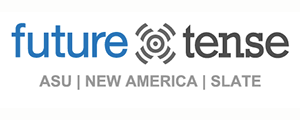Advocating more action on the demand side…

 The question on the table at New America, a Washington think tank, was deliberately provocative: “Who’s afraid of online speech?” With the backdrop of a presidential State of the Union address, prospects of mega-meddling with this year’s elections, and a torrent of misinformation that still seems to be growing, the answers were nuanced and, as you’d expect, conflicting.
The question on the table at New America, a Washington think tank, was deliberately provocative: “Who’s afraid of online speech?” With the backdrop of a presidential State of the Union address, prospects of mega-meddling with this year’s elections, and a torrent of misinformation that still seems to be growing, the answers were nuanced and, as you’d expect, conflicting.
In my part of the event (organized by Future Tense, a partnership of Arizona State University, New America, and Slate magazine), I pitched for greater national attention on the demand side in the so-called marketplace of ideas. I didn’t get to say everything I wanted to include, but these (below the video; my piece starts at around 36 minutes) are the points I prepared ahead of time:
We’ll hear a lot about improving the supply today. I want to suggest that we need to focus at least as much on demand.
We need to upgrade supply, no question. We need to have information we trust because it’s based on reality. We need a common set of facts – real ones, not alternative facts – from which we can decide how we want to proceed.
But unless we upgrade demand – upgrade ourselves, so we can recognize and, yes, demand quality information – we can’t possibly solve the problem. We need to help people find, understand, act upon, and create credible news and information, and to share it with integrity.
People call this many things, including news literacy, media literacy, and other names. But it’s rooted in civics and especially critical thinking, a skill that we need to instill in absolutely everyone starting at a young age and then reinforce throughout our lives. It needs to be as close to universal as possible – we need massive scale, as the tech crowd would call it.
We can get scale in three basic ways.
- First, education and community institutions like libraries. A few states have laws requiring made this a priority. The federal government has done almost nothing.
- Second, the news media themselves. They typically haven’t tried. But they could do it with, among other things, more transparency and conversation and collaboration with the people and institutions in the communities they serve.
- Third, the tech platforms – which almost define the word scale these days. They could so so much more than they’ve done.
Despite some very useful one-offs and individual programs, we don’t remotely have scale in any of these areas. This represents civic failure, not just institutional issues.
Our new collaborative lab at ASU is working on experiments to help make scale happen. We’re supporting the work of many fine organizations that have been in the field. They include, among others, the News Literacy Project, Hearken, the Newseum, Trust Project, Center for News Literacy, Poynter Institute, and more. We’re working on a pilot with three McClatchy newsrooms in different parts of the country, along with our own Cronkite News. We’ll be launching a project to reduce the bad effects of misinformation in health and science.
Even if everyone in this arena succeeds, that won’t be enough without much more focus on this by many more players. But first we need, as a society, to recognize how important the demand side – based in critical thinking, civics, and a variety of literacies – really is.
I hope that before we think about taking whacks at free speech in the name of improving our information supply, let’s first improve the demand.
***
My co-panelist was U.S. Sen. Amy Klobuchar, a Minnesota Democrat who talked about a transparency-in-politics bill she’s pushing. It would require tech companies, not just traditional broadcasters, to disclose the source of political advertising. I’m all for the idea in general, but worry about a) how would it work given the opportunity for gaming any system; b) who’d enforce it, and how; and c) what unintended consequences would crop up.
Still, the idea is appealing for several reasons. Transparency in the political (and in this case media) sphere is generally useful. This could help voters make smarter decisions about what level of credence to give candidates or proponents of ballot issues. It would, in other words, be a tool for the public.
In a later panel, the idea of better tools got repeated attention, in the context of what the tech platforms — notably Facebook, Twitter, Google, et al — could do to reduce misinformation or at least help users handle it better (the latter would be my approach, since I don’t want the platforms to decide what is true). This, in my view, is the linchpin in creating better demand from platform users. I’ll be blogging in considerably more detail about how I’d approach this in the near future.
Dan Gillmor is a longtime participant in new media and digital media literacy. He’s author of the 2009 book, Mediactive, discussing media literacy in the digital age from a journalist’s perspective.
